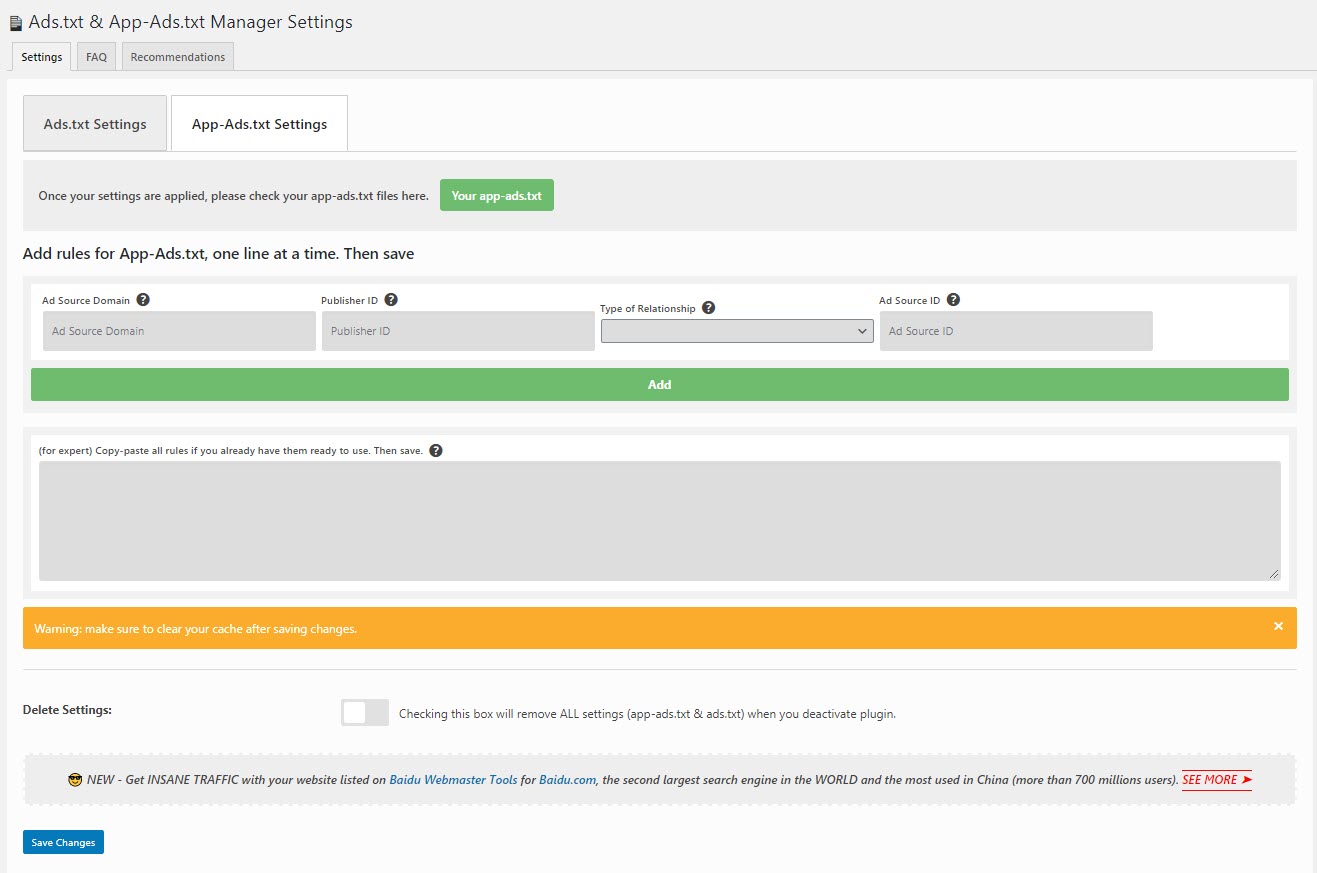Ads.txt & App-ads.txt Manager Plugin for Wordpress - Rating, Reviews, Demo & Download

Plugin Description
Ad partners are frequently adding new demand sources to their Ads.txt & App-ads.txt lists of authorized sellers.
- Create your Ads.txt & App-Ads.txt files with the same tool (all-in-one)
- Add manual entries (copy-paste) for « ready-to-use » code snippets.
- Edit & manage your files on demand
- View WordPress Ads.txt & App-ads.txt files before/after publishing
Note : Google Ad Manager and AdMob, Google’s mobile ad network, now support app-ads.txt, the anti-ad fraud protocol for app publishers. Why we should care? Google said in April 2019 that its DSP Display & Video 360 would stop buying unauthorized in-app inventory starting in August 2019 (same with Centro). Given its market leadership position, Google’s support for app-ads.txt from both the buy and sell sides will help propel adoption of the standard by app publishers.
How does WordPress Ads.txt & App-ads.txt Manager work to implement app-ads.txt:
Provide a developer website in your app store listings. Ensure that the proper developer website URL is accessible in the developer website section of the app store (advertising platforms will use this website to verify ads.txt or app-ads.txt files).
In WordPress Ads.txt & App-ads.txt Manager, go to setting page.
- Ad Source Domain
— The canonical domain name of the SSP, Exchange, system that bidders connect to (they publishes a document detailing what domain name to use). - Publisher ID
— This must contain the same value used in transactions (i.e. OpenRTB bid requests) in the field specified by the SSP/exchange (For OpenRTB = publisher ID | For OpenDirect = publisher’s organization ID). - Type of Relationship: (Direct, reseller)
— Your direct demand partners should be listed as “direct.” If your partners are using third-party resellers to sell your inventory, such providers should be listed as “reseller.” In any case, you should not add any provider to your app-ads.txt file unless you or your partner have a direct relationship with them. - Ad Source ID
— An ID that uniquely identifies the advertising system within a certification authority.
Do it for all your authorized digital sellers or resellers of your ad inventory.
Click « Save changes » and WordPress Ads.txt & App-ads.txt Manager plugin will create a virtual .txt file in the root of your website; for example, www.mysite.com/ads.txt OR www.mysite.com/app-ads.txt. You can edit the content whenever you need.
Make sure to clear your cache
Note 1 : Use of app-ads.txt is not mandatory, but is highly recommended, especially if you are concerned that others may be spoofing your app.
Note 2 : It can take up to 24 hours to crawl and verify your app-ads.txt files. Please wait at least 24 hours for the app-ads.txt status to update.
Note 3 : Since ads.txt file is supposed to be in the root directory of a domain name, this plugin currently only works for root level domain like example.com. It does not work for WordPress installed in subdomain, subdirectory, or a single site in a multi-site network.
What’s app-ads.txt?
In June 2017, the IAB (The Interactive Advertising Bureau Tech Lab) launched ads.txt, a file enabling web publishers to designate authorized digital sellers of their ad inventory. Ads.txt helped the industry distinguish real supply sources from fake ones, and after its immediate success and adoption, the next logical step was to extend the reach of ads.txt into the mobile app ecosystem. App-ads.txt is the mobile in-app equivalent of this specification, which mobile publishers can implement.
The app-ads.txt file is the version of ads.txt for mobile in-app and OTT advertising, to combat bad actors that disguise themselves as another company’s app in order to siphon the money that advertisers are spending on mobile and OTT advertising. App-ads.txt files are formatted the same as ads.txt files (view IAB FAQ for ads.txt and app-ads.txt).
Thanks to app-ads.txt file, Mobile and OTT app publishers can list the ad tech vendors that are authorized to sell or resell their ad inventory, and programmatic ad buyers can check these lists to make sure that a company claiming to offer an app’s inventory is actually able to sell the app’s inventory.
This file opens the door for a new level of transparency.






